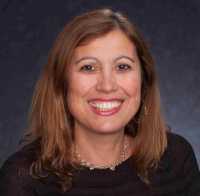Author Interviews, FDA, JAMA, Medical Imaging / 04.12.2018
Computer Simulation Study Favors Tomosynthesis over Digital Mammography
MedicalResearch.com Interview with:
 Aldo Badano, Ph.D.
Deputy Director, Division of Imaging, Diagnostics, and Software Reliability
Office of Science and Engineering Laboratories
Center for Devices and Radiological Health Silver Spring, MD 20993
MedicalResearch.com: What is the background for this study? What are the main findings?
Response: Expensive and lengthy clinical trials can delay regulatory evaluation of innovative technologies, affecting patient access to high-quality medical products. Although computational modeling is increasingly being used in product development, it is rarely at the center of regulatory applications.
Within this context, the VICTRE project attempted to replicate a previously conducted imaging clinical trial using only computational models. The VICTRE trial involved no human subjects and no clinicians. All trial steps were conducted in silico. The fundamental question the article addresses is whether in silico imaging trials are at a mature development stage to play a significant role in the regulatory evaluation of new medical imaging systems. The VICTRE trial consisted of in silico imaging of 2986 virtual patients comparing digital mammography (DM) and digital breast tomosynthesis (DBT) systems.
The improved lesion detection performance favoring DBT for all breast sizes and lesion types was consistent with results from a comparative trial using human patients and radiologists. (more…)
Aldo Badano, Ph.D.
Deputy Director, Division of Imaging, Diagnostics, and Software Reliability
Office of Science and Engineering Laboratories
Center for Devices and Radiological Health Silver Spring, MD 20993
MedicalResearch.com: What is the background for this study? What are the main findings?
Response: Expensive and lengthy clinical trials can delay regulatory evaluation of innovative technologies, affecting patient access to high-quality medical products. Although computational modeling is increasingly being used in product development, it is rarely at the center of regulatory applications.
Within this context, the VICTRE project attempted to replicate a previously conducted imaging clinical trial using only computational models. The VICTRE trial involved no human subjects and no clinicians. All trial steps were conducted in silico. The fundamental question the article addresses is whether in silico imaging trials are at a mature development stage to play a significant role in the regulatory evaluation of new medical imaging systems. The VICTRE trial consisted of in silico imaging of 2986 virtual patients comparing digital mammography (DM) and digital breast tomosynthesis (DBT) systems.
The improved lesion detection performance favoring DBT for all breast sizes and lesion types was consistent with results from a comparative trial using human patients and radiologists. (more…)
 Aldo Badano, Ph.D.
Deputy Director, Division of Imaging, Diagnostics, and Software Reliability
Office of Science and Engineering Laboratories
Center for Devices and Radiological Health Silver Spring, MD 20993
MedicalResearch.com: What is the background for this study? What are the main findings?
Response: Expensive and lengthy clinical trials can delay regulatory evaluation of innovative technologies, affecting patient access to high-quality medical products. Although computational modeling is increasingly being used in product development, it is rarely at the center of regulatory applications.
Within this context, the VICTRE project attempted to replicate a previously conducted imaging clinical trial using only computational models. The VICTRE trial involved no human subjects and no clinicians. All trial steps were conducted in silico. The fundamental question the article addresses is whether in silico imaging trials are at a mature development stage to play a significant role in the regulatory evaluation of new medical imaging systems. The VICTRE trial consisted of in silico imaging of 2986 virtual patients comparing digital mammography (DM) and digital breast tomosynthesis (DBT) systems.
The improved lesion detection performance favoring DBT for all breast sizes and lesion types was consistent with results from a comparative trial using human patients and radiologists. (more…)
Aldo Badano, Ph.D.
Deputy Director, Division of Imaging, Diagnostics, and Software Reliability
Office of Science and Engineering Laboratories
Center for Devices and Radiological Health Silver Spring, MD 20993
MedicalResearch.com: What is the background for this study? What are the main findings?
Response: Expensive and lengthy clinical trials can delay regulatory evaluation of innovative technologies, affecting patient access to high-quality medical products. Although computational modeling is increasingly being used in product development, it is rarely at the center of regulatory applications.
Within this context, the VICTRE project attempted to replicate a previously conducted imaging clinical trial using only computational models. The VICTRE trial involved no human subjects and no clinicians. All trial steps were conducted in silico. The fundamental question the article addresses is whether in silico imaging trials are at a mature development stage to play a significant role in the regulatory evaluation of new medical imaging systems. The VICTRE trial consisted of in silico imaging of 2986 virtual patients comparing digital mammography (DM) and digital breast tomosynthesis (DBT) systems.
The improved lesion detection performance favoring DBT for all breast sizes and lesion types was consistent with results from a comparative trial using human patients and radiologists. (more…)


